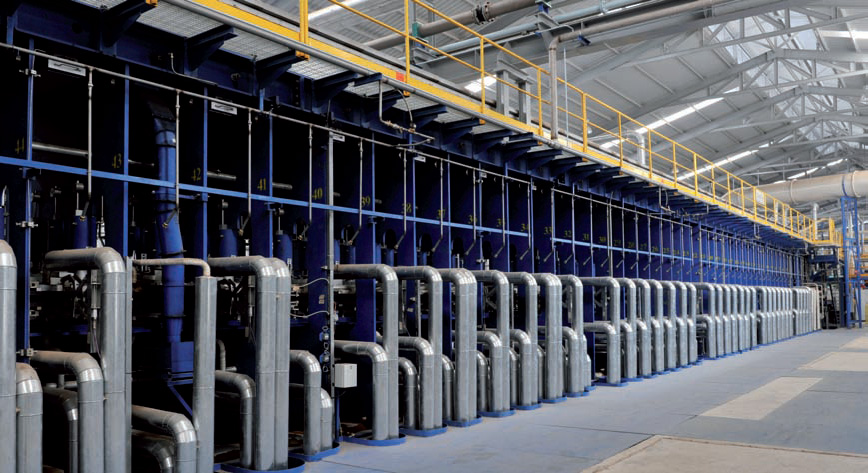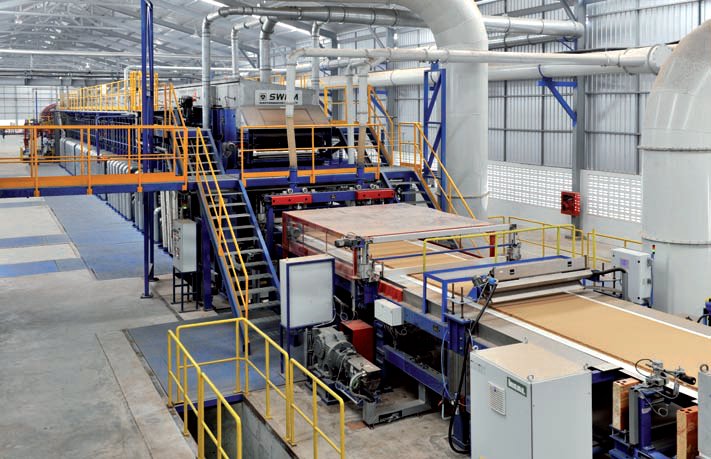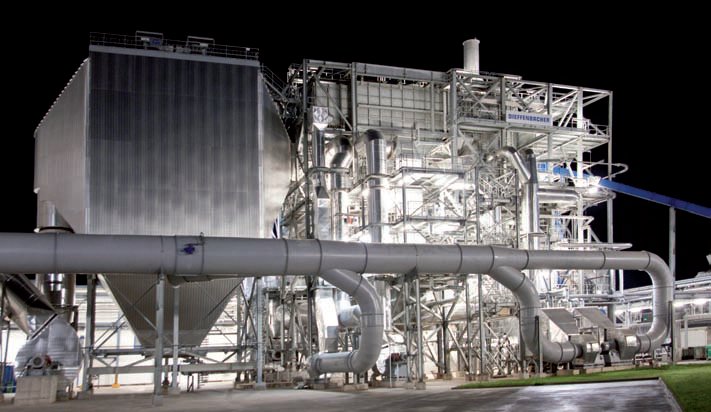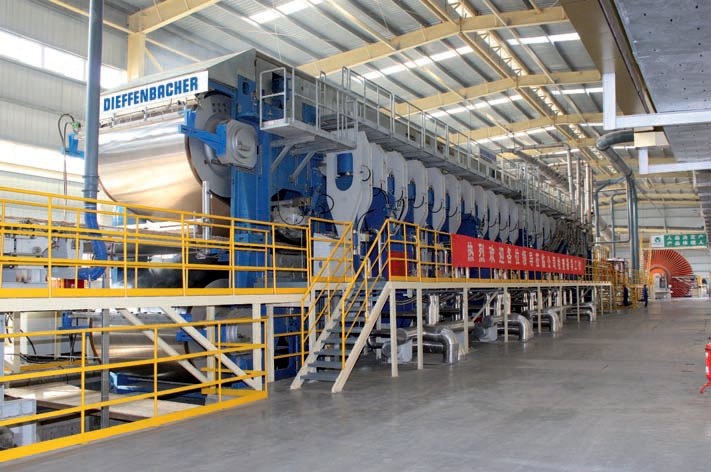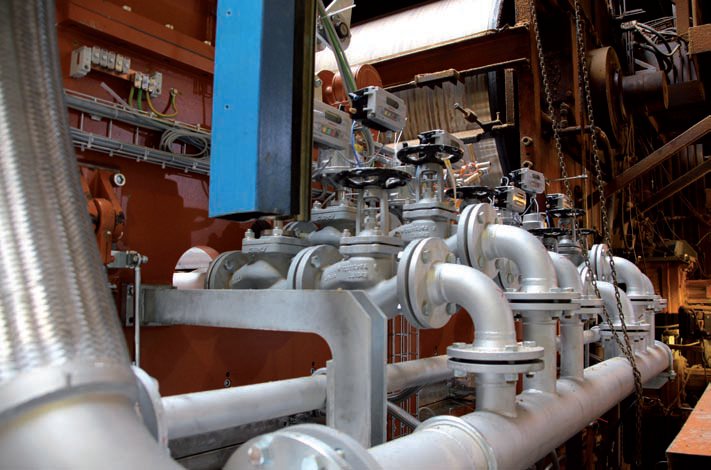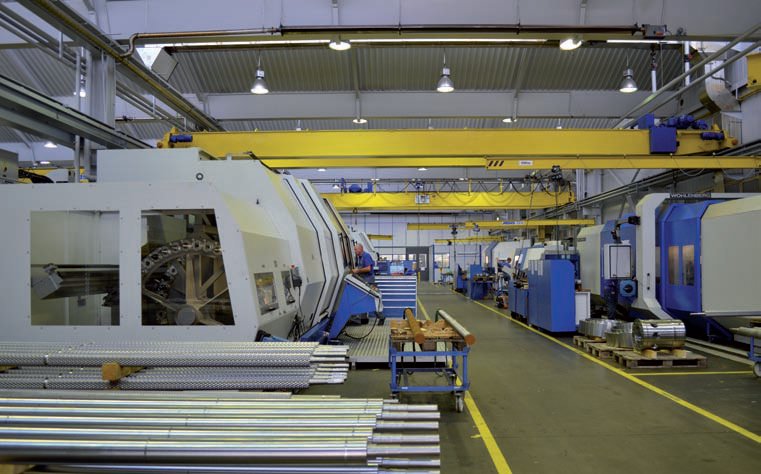Integrated systems
24 January 2014Dieffenbacher, headquartered in Eppingen, is having a good 2013, with sales set to break another record and orders in from across the globe. Mike Botting visited the company to discuss its current offerings and its views on the future.
Dieffenbacher GmbH Maschinen und Anlagenbau (machinery and plants) was founded in Eppingen 140 years ago and remains to this day an entirely family-owned business, with the fifth generation Dieffenbacher, Christian, entering the company in early 2014 (see WBPI issue 3, 2013, p52).
Since the difficult early years of the current global economic problems, things have improved greatly for the company.
However, in a sense, the quiet years were not such a bad thing for Dieffenbacher. Chief executive Wolf-Gerd Dieffenbacher saw this time of 'threat' as an opportunity for the company: an opportunity to look inward and, it seems paradoxically, to spend money; Mr Dieffenbacher chose to invest in optimising the production flow in the Eppingen factory and to invest in upgrading existing products and developing new ones.
"This is one of the advantages of being a family-owned business. Only a family-owned business could invest in a quiet period," said Bernd Bielfeldt, who heads up the management team for Business Unit Wood in North America and Europe.
This investment involved developing improvements to a number of the company's existing products - as well as venturing into completely new areas such as digital printing - and Dieffenbacher has been reaping the benefits of that investment programme in recent years.
The year 2013 has been a particularly good one for the company, seeing an order list of 14 complete panel lines, just between January and October.
The order intake so far this year, at the time of my visit to Eppingen on the last day of October, was valued at €400m.
"This has certainly been a good year for us and I am hopeful that we will come close to €500m by the end of the year. If so, it would be a record year for us," said Volker Kitzelmann, cfo and head of the management team for wood in Asia, Latin America and Russia.
The order intake so far this year has certainly been very international, with complete lines or component parts (dryer and energy system for example) going to China, Latin America, South Asia, North America, the Middle East and eastern Europe.
China is certainly not the frantic market it used to be, but it is still active in the panel business, and perhaps generally more thoughtful in its investment strategies: less MDF and more particleboard and OSB.
That latter panel, OSB, certainly seems to be 'taking off' in China, at least for Dieffenbacher.
"We have sold two OSB lines to China this year so far and we are in discussions with other customers," said Mr Kitzelmann. "There is a clear trend towards OSB in China."
It is interesting to note that one Chinese company, Guizhou Yuanfang, changed its line from particleboard to OSB after placing the original order, while another customer, perhaps more surprisingly, changed from MDF to OSB.
A plywood producer, Kangxin, will start up its 220,000m3/year OSB line in March 2014 and there is a 300,000m3 line on order for another Chinese customer, who cannot be named at this stage.
With the existing Baoyuan mill, that makes four OSB lines established, or in progress, for China so far - and some people had said that Baoyuan would be the first and last such large-scale line!
Dieffenbacher also has an order for a 200,000m3/year OSB line in South East Asia, though we cannot disclose the client's name at this time, but it is, again, currently a plywood producer; the equipment will be delivered to site by the end of 2013.
"I believe there will continue to be some projects for MDF and particleboard in China, but not as many as in the past," said Mr Kitzelmann. "There are still around 200 multiopening MDF lines in China and some of these will close, but some will be replaced with continuous ones.
"Of Dieffenbacher SWPM's [Dieffenbacher's Chinese subsidiary] recent orders for 4ft continuous presses, 50% have been for new lines and 50% have been to replace multi-opening press lines and if replacement continues like that, there is the potential for 20-25 lines still to come for DSWPM. I think two or three a year is a reasonable expectation for us."
"It is of course possible that some will want to change from MDF to particleboard as well," added Mr Bielfeldt.
Dieffenbacher is finding that all enquiries and orders are increasingly for production lines as complete packages, especially where OSB and particleboard are concerned; at least including the forming, gluing, press and dryer.
In Latin America, historically not such a strong market for Dieffenbacher, Mr Kitzelmann said the company has set up a new team and a new strategy, already with some success: Duraplay in Mexico has ordered a 120,000m3/year CPS line with an 8ft x 17.4m press this year and another Mexican company, PROTeak, has formed a new company, PRO MDF for a new project. It is a Greenfield site in the state of Tabasco and is a complete MDF production line, including glue preparation and EVOjet M gluing system, energy plant with co-generation and a short-cycle press line. Delivery will commence in October 2014.
"We have strengthened our existing cooperation with our cooperation partner Inserco and we now have a much stronger team in the region than before," said Mr Kitzelmann.
"The Dieffenbacher group has references for production lines with its CPS continuous press in Argentina, Chile, Colombia, Mexico and Brazil and we have other projects awaiting a decision imminently," he said.
Mr Bielfeldt added: "Western Europe is mainly more about replacement, rather than completely new lines, although we did supply a new front-end package and press line to the Malacky plant in the Czech Republic in 2013.
"There are two new projects currently under discussion and a decision will probably come in 2014.
"Press extensions and pre-heating systems are an increasingly important part of the business in western Europe."
Eastern Europe is of course a different matter.
"Russia is still very interesting for us and I think it will be good for two or three lines a year," said Mr Kitzelmann. "Also, there are not many OSB lines in Russia and I think there is room for two, three or maybe four more."
Dieffenbacher has two lines on order for Russia for particleboard, for Dyatkovo and Tomlesdrev.
It is also starting up an OSB line for Mogilev, owned by Kronospan, next year (378,000m3/year) and an MDF line at Mostovdrev (165,000m3/year), which is now being delivered - both in Belarus.
Of course North America has been quiet for some time but Mr Bielfeldt acknowledged that the market is now starting to move and Dieffenbacher is receiving an increasing number of orders for spares as moth-balled lines return to action.
"I think a lot of older OSB lines will never re-start. We have the first enquiries about new lines coming in now - mainly OSB, but people are also talking about HDF," said Mr Bielfeldt.
Mr Kitzelmann said that the Middle East, Africa and Indonesia are also definitely places to watch for future expansion.
New products
Dieffenbacher launched a number of new products, recent innovations and upgrades to existing products at Ligna 2013 in May.
For instance, the company's CPS continuous press has been given some new features in recent years, such as improved support for the platens - the Parallel Press Gap System, or PPS - something which has in fact been available for about three years.
"Our presses have the split-frame system with special cylinder arrangement. This offers easier maintenance and lower fire risk in operation," said Mr Bielfeldt. "We have no cylinders within the width of the press above the platens. That means there is no chance of oil leaking directly onto the hot platens and that it is easier to remove any dust and debris," he explained.
"We do have cylinders across the press width below the bottom platen which can be individually adjusted, simply, by the operator for perfect thickness calibration.
"The operator can, by computer control, also link a group of cylinders for adjustment if required, rather than adjusting each cylinder row individually. The infeed of the CPS has a double-hinged upper platen that allows fine adjustment of the infeed geometry from thin to thick boards.
"Wear of the heating platen cannot be excluded due to the permanent load from the steel belt-carrying roller rods. But the real wear area is only in the high-pressure zone at the beginning of the press, so we have developed wear parts in the form of protection plates so that is all you have to replace and, due to the split-frame system, it's much quicker as we can carry out the work from the side of the press and replacement of the entire platens is not necessary."
Dieffenbacher also promoted its environmental protection systems at Ligna. For instance, in cleaning press exhaust gases it has developed systems which can be used in place of wet electrostatic precipitators (WESPs) to clean emissions.
Of course, in these difficult times, costsaving is ever more important to panel mill operators, hence the introduction of Dieffenbacher's established EVOjet M resin injection system for MDF lines and, introduced at Ligna this year, its EVOJet P for particleboard, which is said to pay for itself in under a year in terms of resin savings in an average particleboard line.
Dieffenbacher also presented its recycled wood preparation concept at Ligna, having Maier size-reduction equipment and the ClassiCleaner within its product range.
This year, Dieffenbacher signed a cooperation agreement with logyard specialist company Holtec, in the Logyard Alliance, to maximise the benefits of both companies' specialist equipment.
Another cooperation agreement was also signed this year, with Carmanah Design and Manufacturing Inc, to take advantage of each others' expertise in the OSB manufacturing industry in particular, with Carmanah's 100- year involvement in strander and other technologies.
In fact, both the major European manufacturers of continuous presses have in recent years put a lot of effort into adding competencies such as these to their product range, in order to become complete line suppliers from a single source.
"We now have the majority of components within the Dieffenbacher group and are able to feel confident in offering complete packages and customers are becoming more and more aware that we can do this," said Mr Kitzelmann. "Five years ago we might have had to work to convince people, but nobody questions it any more."
I asked the reason for this move to complete plants from one supplier, which was very common 15 to 20 years ago, but seemed to become less common as panel making companies learnt their way in continuous production.
"As lines have got bigger, they have also got more complicated and the producer cannot allow interfaces [between each part of the production line] to be out," said Mr Bielfeldt. "Customers' engineers don't have all the competencies necessary for a modern line. In fact the tendency, even among the biggest players, is to increasingly buy complete, integrated, systems."
Mr Kitzelmann added: "If the customer insists on choosing their own suppliers for part of the line, we are open to discussion on combining these elements in our package".
So what of the future for Dieffenbacher?
"This year has been good for us, but I believe the number of projects ordered next year will be lower. Having said that, 2013 was a big surprise," said Mr Kitzelmann. "I think that not more than 20 lines will be placed globally next year. I can't believe that 2013's numbers will be repeated. The overall number for the whole of 2013 is looking like 26-28 between all the European and Chinese suppliers of continuous press lines."
